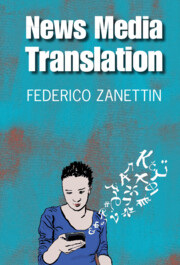Book contents
- News Media Translation
- News Media Translation
- Copyright page
- Contents
- Figures and Table
- Acknowledgments
- Introduction
- 1 Putting News Media Translation into Perspective
- 2 Translation as News
- 3 Approaches to News Media Translation
- 4 Ethnomethodology and News Media Translation
- Conclusion
- Appendix A
- References
- Subject and Name Index
3 - Approaches to News Media Translation
Published online by Cambridge University Press: 29 October 2021
- News Media Translation
- News Media Translation
- Copyright page
- Contents
- Figures and Table
- Acknowledgments
- Introduction
- 1 Putting News Media Translation into Perspective
- 2 Translation as News
- 3 Approaches to News Media Translation
- 4 Ethnomethodology and News Media Translation
- Conclusion
- Appendix A
- References
- Subject and Name Index
Summary
The area of enquiry covered by this volume is usually referred to as “news translation” (Bielsa 2020; Holland 2013) or “journalistic translation” (JTR, Valdeón 2015b). The two terms make reference to the professional field in which translation is practiced rather than to a specific type of activity; however, as noted by Davier et al. (2018, p. 154), the second term is more comprehensive, including the translation of not just news but also other journalistic products such as lifestyle magazines. By adopting the label “news media translation,” I would like to propose an even more inclusive definition of news media as “forms of mass media that focus on delivering news to the general public or a target public. These include print media (newspapers, news magazines), broadcast news (radio and television), as well as digital media (online newspapers, news blogs, news videos, live news streaming, etc.).” In this sense, the term news media translation highlights the role of translation in different media and by different actors, including nonprofessional translation of information.
- Type
- Chapter
- Information
- News Media Translation , pp. 86 - 132Publisher: Cambridge University PressPrint publication year: 2021

